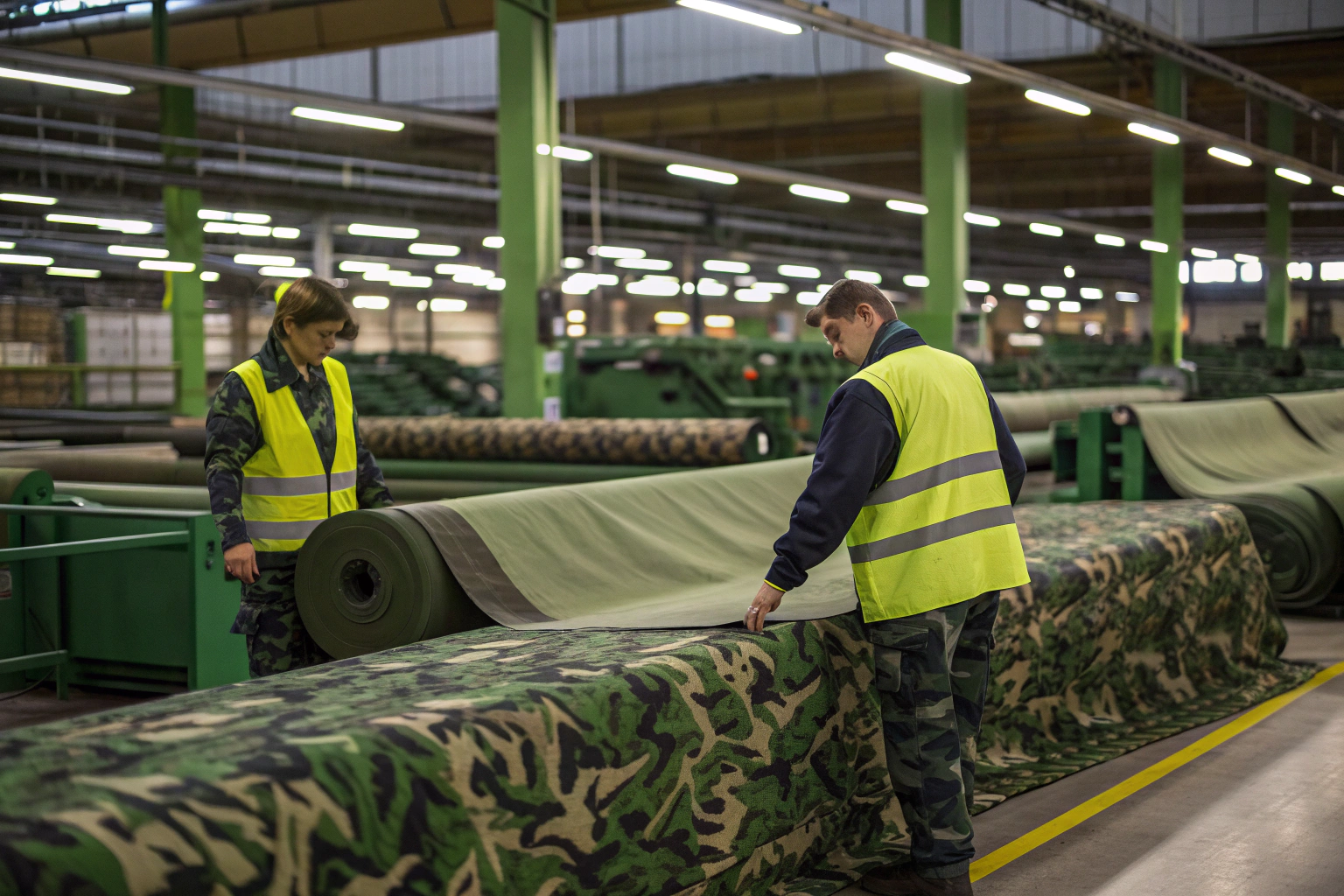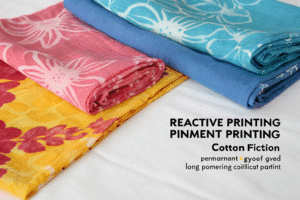Today many buyers look for camouflage fabrics that meet MIL-C-5040H certification. These fabrics are used in military, outdoor, and safety products. Buyers want real certification and stable quality. But many buyers find it hard to locate reliable suppliers. This article explains what the certification means, where to find good suppliers, how to check quality, and how to import to the U.S. without problems.
What Is MIL-C-5040H Certification?
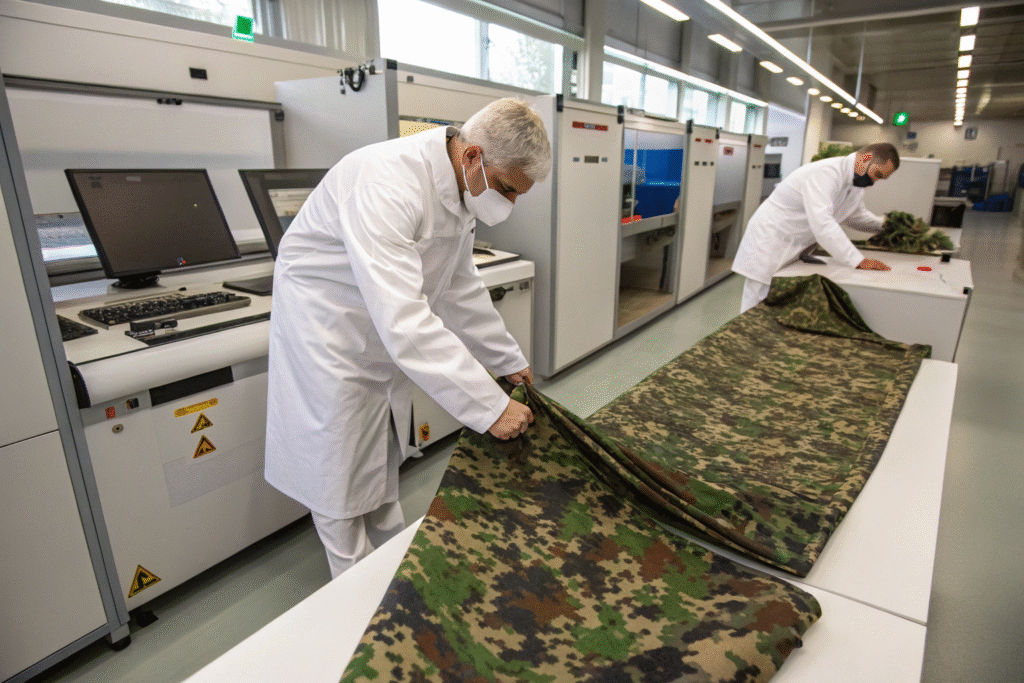
Understanding the MIL-C-5040H Standard
The MIL-C-5040H certification is a U.S. military rule. It sets clear tests for camouflage fabrics. These tests check strength, color, and use in tough conditions. The standard is often used for parachute cords, uniforms, and gear. Buyers who want real military fabrics need to ask suppliers for reports and certificates. You can check more on the U.S. Defense Logistics Agency or ASTM International.
Why Certification Matters for Buyers
Certification builds trust. It shows that the fabric is safe and tested. For U.S. and EU buyers, it is also needed for customs and contracts. Many brands and government buyers only accept certified fabrics. Buyers should confirm with trusted labs such as SGS and Intertek. Without a certificate, goods may be refused at customs or cause financial loss.
How to Verify Textile Quality and Compliance
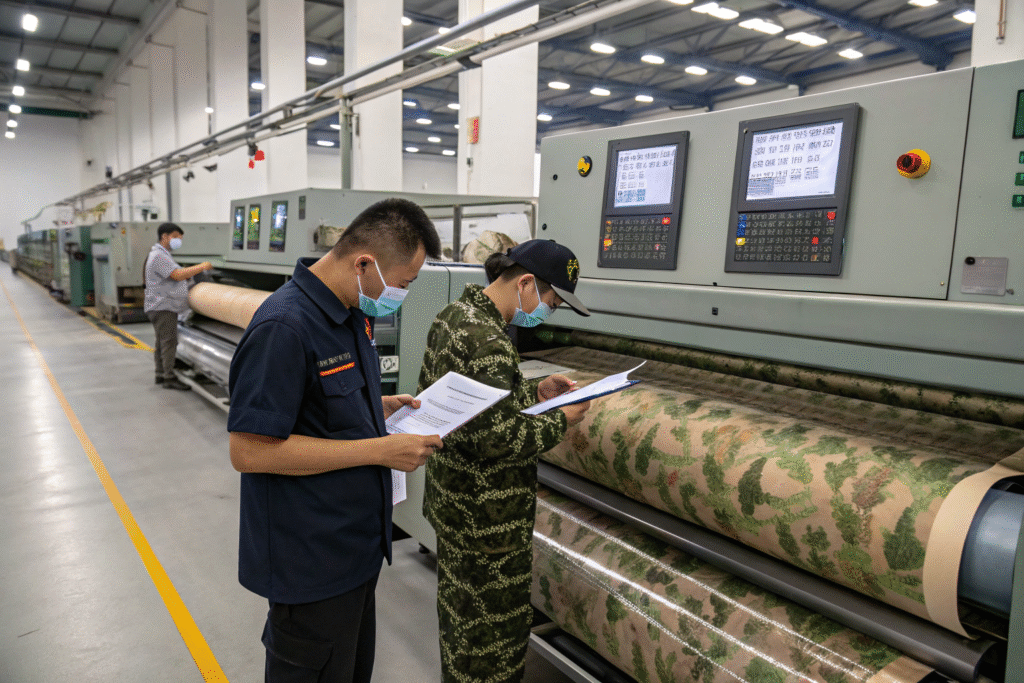
Requesting Third-Party Lab Reports
The best way to confirm quality is to ask for lab reports. Well-known labs such as SGS and Intertek can test shrinkage, color, and fabric strength. Buyers should check for CNAS-approved reports that show MIL-C-5040H results. To compare standards, you can also look at OEKO-TEX® or ISO Standards. Some suppliers also use QR codes on fabric rolls. Buyers can scan the code to view test results.
On-Site Inspections and Virtual Audits
Buyers with large orders often visit factories. This lets them see fabric and process with their own eyes. Some suppliers also give virtual audits through video calls. This saves time and cost. Companies like Bureau Veritas and TÜV SÜD also provide audit services. Mixing test reports with audits gives buyers more safety in their deals.
Importing Camouflage Textiles to the U.S.
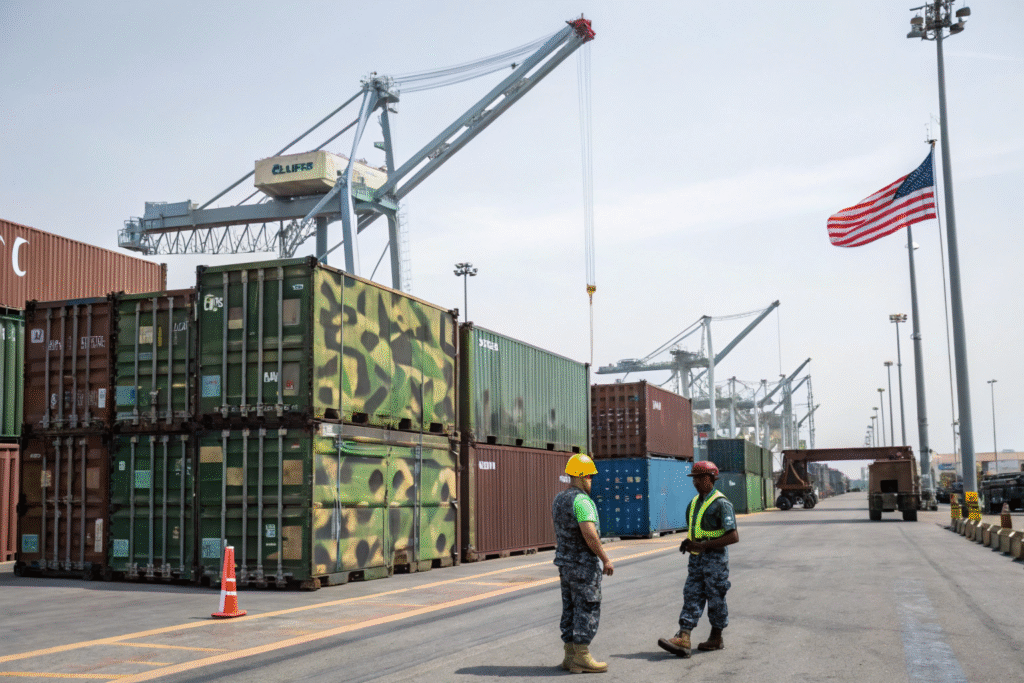
Navigating Tariffs and Customs Regulations
Importing into the U.S. needs careful steps. Buyers should check tariff codes and customs rules. These rules often change. The latest info is available at U.S. Customs and Border Protection and U.S. International Trade Commission. Good suppliers prepare full paperwork. This avoids shipment delays.
Shipping and Logistics Solutions
Logistics is very important for U.S. buyers. Many suppliers in Shanghai and Keqiao offer sea, air, or train shipping. Buyers can track schedules on Maersk or compare prices on Freightos. Some suppliers also keep warehouses in the U.S. or EU. This shortens delivery time and lowers risks. It helps U.S. brands and military buyers receive fabrics on time.
Importing Camouflage Textiles to the U.S.
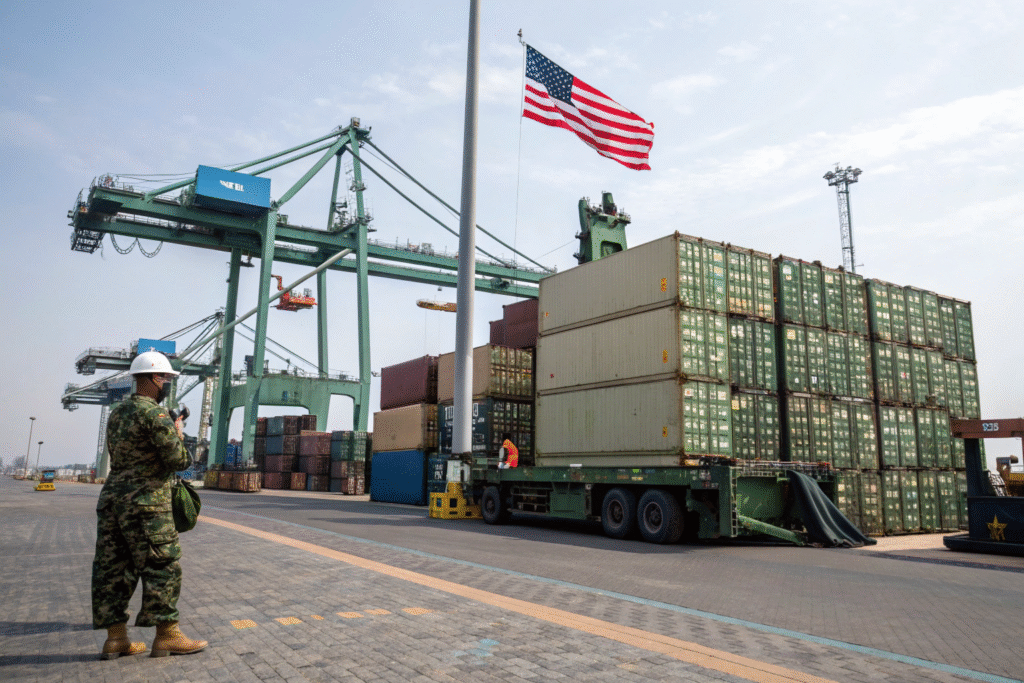
Navigating Tariffs and Customs Regulations
Importing into the U.S. needs careful steps. Buyers should check tariff codes and customs rules. These rules often change. The latest info is available at U.S. Customs and Border Protection and U.S. International Trade Commission. Good suppliers prepare full paperwork. This avoids shipment delays.
Shipping and Logistics Solutions
Logistics is very important for U.S. buyers. Many suppliers in Shanghai and Keqiao offer sea, air, or train shipping. Buyers can track schedules on Maersk or compare prices on Freightos. Some suppliers also keep warehouses in the U.S. or EU. This shortens delivery time and lowers risks. It helps U.S. brands and military buyers receive fabrics on time.
Conclusion
Finding MIL-C-5040H certified camouflage textiles may seem complex at first. But buyers who know the rules, attend trade shows, use trusted online platforms, and ask for lab reports will find safe and steady suppliers. Working with partners in major hubs like Keqiao also gives cost and speed benefits. In the end, good planning and careful checks make sure buyers get the right fabrics for their business needs.

